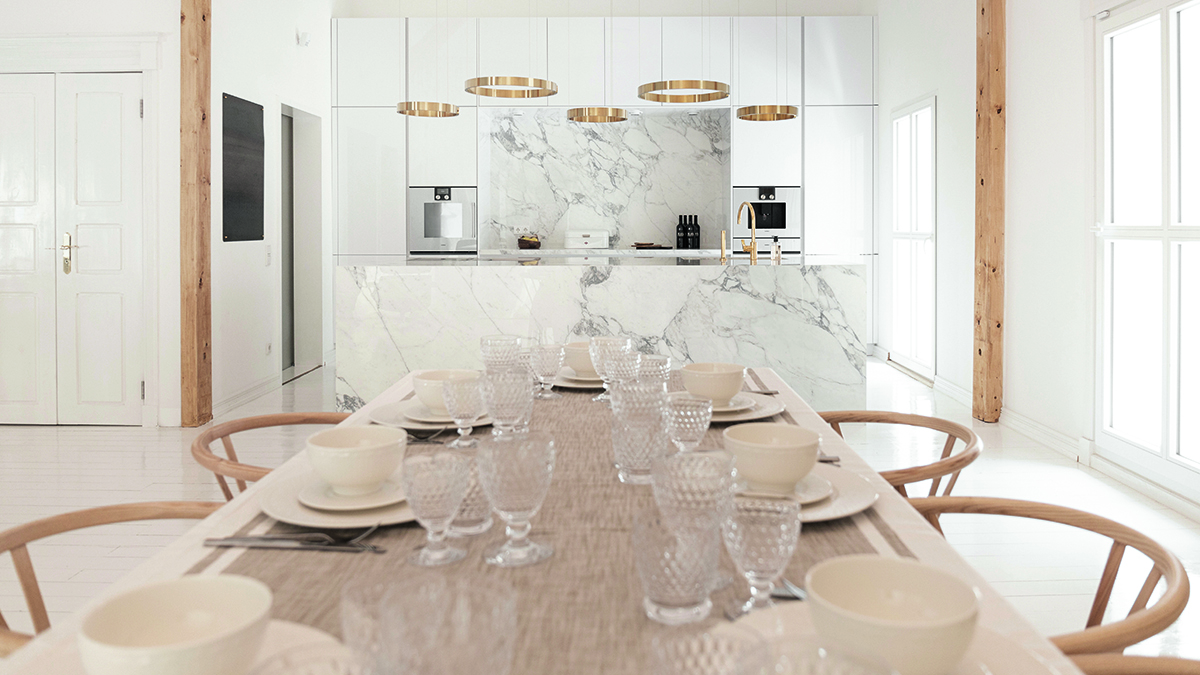
The kitchen of a Cologne family designed for socialising, with Gaggenau equipment including a 200 series oven, a 400 series cooktop and discreetly hidden fridge-freezer and dishwasher.
The impact of climate change, digitalisation and the pandemic is demanding bold, new visions for our homes and public spaces. Here, Millie Walton speaks to Sven Baacke, Head of Design at the luxury home appliance manufacturer Gaggenau, and Ian Lambert, Director of Cambridge-based architecture and design studio Inclume — who recently created an installation for Gaggenau’s London showroom — about sustainability, adapting to shifting lifestyles, and the experience of luxury
SVEN BAACKE
Head of Design at Gaggenau
Sven Baacke is Gaggenau’s visionary head of design. Visionary in both senses of the word: he is a passionate, radical creative, and a kind of prophet. Then again, part of his job, and perhaps of all good designers, is to anticipate the future and in some ways, also to shape it.
Follow LUX on Instagram: luxthemagazine
Baacke is in the business of kitchens, which means any emerging cultural or social trends are filtered through a very specific perspective: “What will that mean for kitchens?” and more specifically, “What will that mean for Gaggenau’s luxury appliances?” Take, for instance, the trend for biophilic design. While the desire for creating living spaces that are more closely connected to nature might not directly affect say, the design of an oven, it does affect the architectural structure of the home, which in turn, means rethinking the positioning of the kitchen and the way that people move through and use the space. “Our customers are increasingly creating environments such as outdoor kitchens or gardens where they can grow their own ingredients,” says Baacke. “But what we think about is: how far can Gaggenau go? Is the kitchen the limit for us, or beyond?”
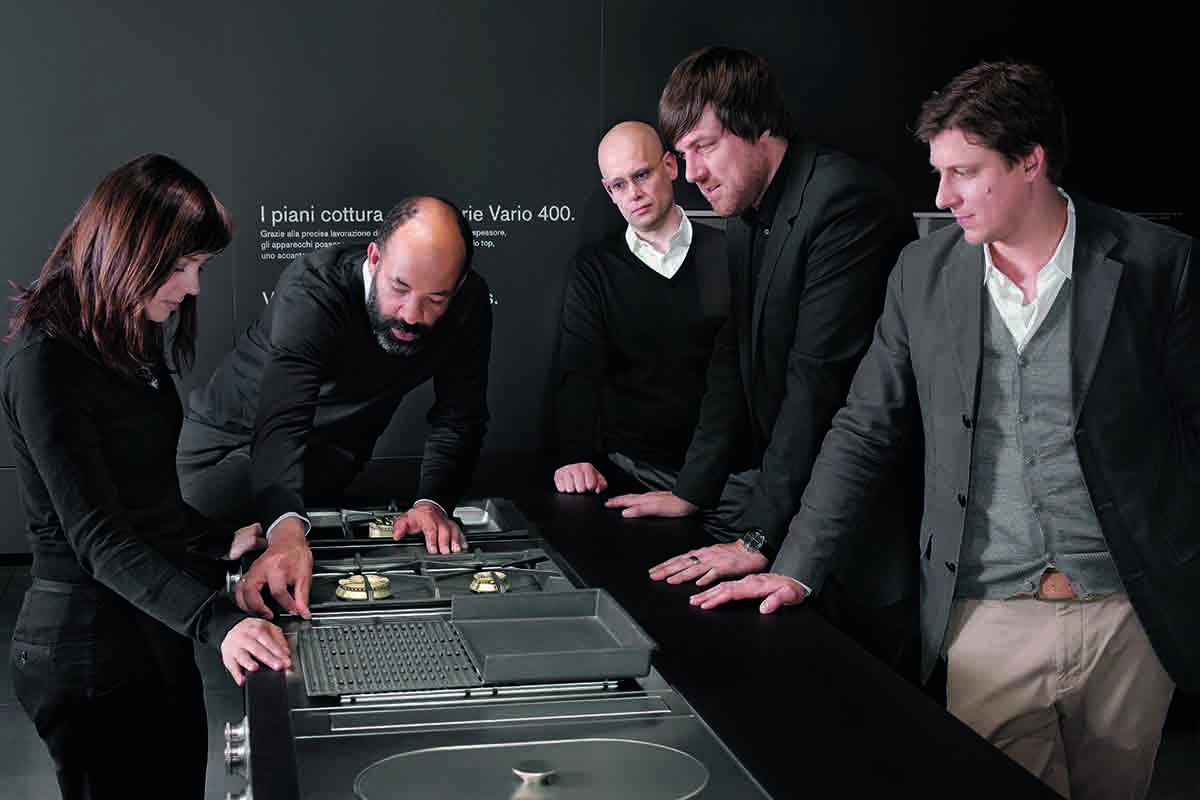
Gaggenau’s design team
The brand’s global success is built on its ability to create a range of good-looking, technologically advanced appliances that effortlessly respond to these shifts and demands in lifestyle. Baacke calls their approach “traditional avant-garde”, in the sense that they are a historic brand with a contemporary ethos. At one point during our conversation over Zoom, he holds up the Gaggenau designer’s handbook, flicking through the pages to show me what seems to be mostly images, which Baacke describes as “mood boards”. “It helps to have guidelines,” he says, “but it’s not a cookbook.”
How does Gaggenau decide what to make next? “Our designers are very curious, so there are always a lot of vibrant ideas floating around. Mostly, we are thinking of what not to do and I don’t just mean physical design, shapes and colours, but also topics. There are so many things already out there. You really need to think twice before you create something new and to ask what difference will a new product make in the world.”
Despite fluctuating trends in aesthetics, the kitchen remains a central feature of building design. Even if it is becoming increasingly integrated into our homes, for now, at least, we still need somewhere to cook, eat and gather. “There’s a big chance the kitchen will become invisible in the future, but there are two poles of opinion about that,” says Baacke.
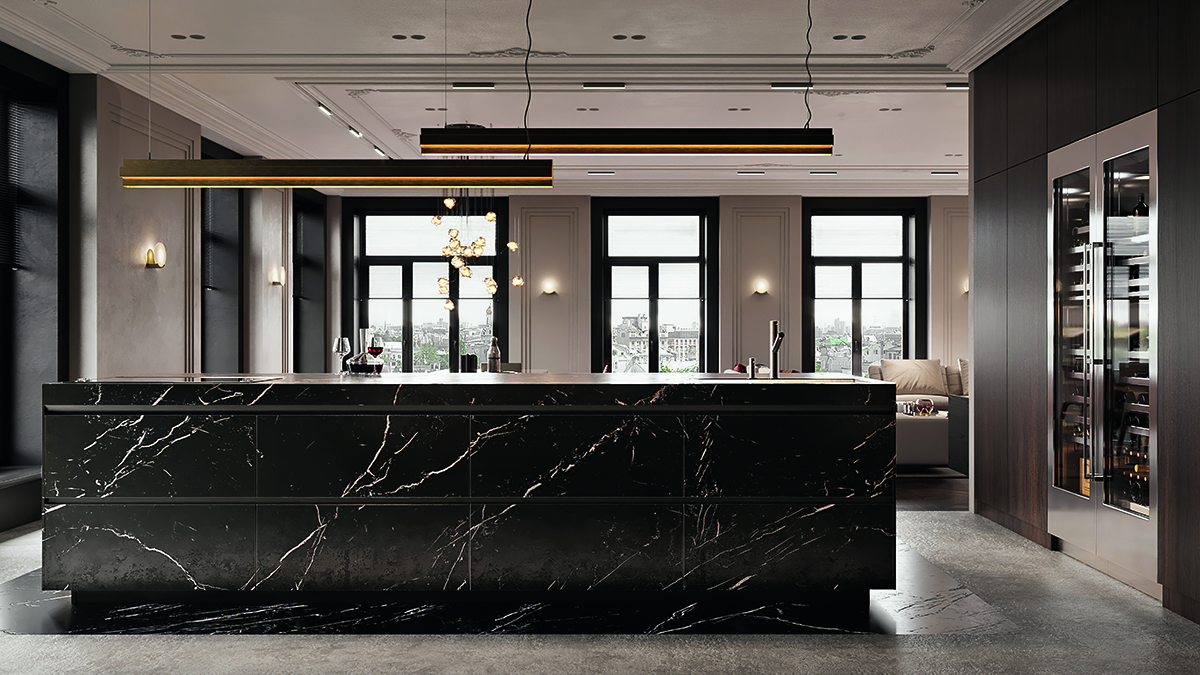
Paris kitchen designed with Gaggenau equipment by the Russian architecture and design studio IQOSA
Gaggenau’s appliances might look like design objects, with super-sleek metallic finishes and sculptural lines, but they are also made for everyday usage. “The tactile element of our products is very important,” says Baacke. “Nowadays, with the increasing digitalisation of our lives, nothing is really by chance, everything is calculated. So, it’s nice to still have something in your hand, to touch a real material.”
Read more: How Andermatt became a leading luxury destination
At the same time, technological advances have undoubtedly enabled Gaggenau’s appliances to provide increasing levels of precision and ease in both professional and domestic kitchens. The heat in their combi-steam ovens, for example, can be controlled to within one degree, a process which continually revises the estimated cooking time based on temperature-probe readings from three different sensors. They can also be integrated with voice-controlled AI systems such as Alexa. Is this the modern-day definition of luxury?
“There are a lot of products that are high-end, but luxury is more of a feeling. It’s very individual, and it’s not just about the technology,” says Baacke. “We try to create feelings. When you use our appliances in your beautiful home which is connected to your family, that can be a luxurious experience.”

Gaggeanu’s 200 series ovens
Gaggenau’s materials (think stainless steel, dark aluminium, rich woods and glass) are selected for technical and aesthetic reasons, but also durability, which is a crucial part of the brand’s approach to sustainability. Baacke’s response, as always, is to look to the future, and longer-term solutions, rather jumping on the sustainability trend as a marketing tool without properly considering the consequences.
“We create appliances that are really reliable. You can buy our ovens from the 1980s on the internet and they still work and look good,” he says. “But it’s also a mindset. Does a patina on a surface mean that you have to throw it away, or could it be like a leather bag that gets better over time and tells a story? Crucially, for us and the whole industry, sustainability also means repairability. Can you unscrew the appliances? Can you separate the materials?”
Alongside an increased cultural awareness of the environment, the difficulties of the past year have brought with it a new appreciation for a slower way of living, which in turn has led to a renewed interest in antiques, vintage products, and craft and artisanal practices that all speak to a certain feeling of nostalgia. Since 2019, Gaggenau has been supporting small-scale makers and producers through their Respected by Gaggenau initiative, and Baacke himself recently bought a BMW motorcycle from 1973 that he describes as “the true essence of a motorcycle”. “There’s a lot of anxiety about what the future will bring, so I think people need to have familiar things around them, things that make them feel good,” he says.
Sven Baacke: Where to start with redesigning your kitchen
The first question has to be: why? What don’t you like? Is it the colour, the arrangement of cupboards or the appliances? Has your lifestyle changed in some way? Has your family grown, or have your kids moved out? Do you like to host dinners? Do you enjoy cooking with guests in the kitchen, or would you prefer for them to sit while you cook? Start with the small things, and the ideas will get bigger.

Ian Lambert with Fragment in Gaggenau’s London showroom
IAN LAMBERT
Director of Inclume
LUX: Your installation for Gaggenau’s showroom in London made innovative use of paper. How did that project come about?
Ian Lambert: We won a competition which was run by the London Festival of Architecture in partnership with the paper supplier G.F. Smith, so a large part of the brief was to create something using paper. We have used paper in the past and it’s actually a great material to work with because it’s malleable and very lightweight, which especially helped with Fragment, the window installation, as we were suspending 4,000 polygonal forms. The design took inspiration from the craftsmanship that Gaggenau has pursued since it started as a hammer mill and nail forge in 1683. The polygonal forms were an abstract representation of fragments of metal and we chose colours that reflected the history of the brand, with the black signifying the Black Forest in Germany, where the brand was born, and the orange representing the roaring fires of the furnaces used to craft the appliances.
LUX: What’s your process for coming up with an initial design? What are the factors you consider?
Ian Lambert: We usually start with a brief, which will be formatted as a response to a question. Visiting the space, talking with the client about how they’ve used the space, what works for them, what doesn’t work for them, and how we can introduce new things – all these factors provide a narrative and a set of parameters to work within.
LUX: Where do you, personally or as a studio, find inspiration for new ideas?
Ian Lambert: I think we’re inspired by what’s around us. It’s difficult to pinpoint a specific place. Looking online is quite a dangerous thing to do – you don’t want to copy other people, but you can find inspiration in little details from different projects and also by revisiting ideas that you’ve already done. At the end of each project, it’s not the final piece, because we can always improve. We take each project and then try and build on that next time by refining details. Over time, it gets better and better.
Read more: How to create a truly sustainable luxury hotel
LUX: In your opinion, what are the key principles to good design?
Ian Lambert: I think good design makes your actions feel easier in daily life. That doesn’t necessarily mean that you have to identify with what’s good architecture or good design. It doesn’t have to be noticed, it can be subtle and understated.
LUX: Do you think the pandemic has had an impact on how people perceive their living environment?
Ian Lambert: I think people are beginning to appreciate the things around them and the value of the spaces that they inhabit. Most people have been working from home lately, so it’s about adaptability. You might have your kids or your partner around and you’re also living in the same space 24 hours a day, so you are able to more easily identify the things that work and the things that don’t work.
LUX: How much of a consideration is sustainability in terms of the materials you use?
Ian Lambert: We’ve always been fairly conscious of what materials we use. With an existing house and its various elements, we try to keep as much of the original as possible, but create a new focal point. We also use a lot of materials, particularly in our installations, that are recycled. It presents a challenge as to how we can use and modify them to create a different experience. It might be just paper or some old pieces of timber but it can be aesthetically amazing if you see something that’s been recycled and then used in a very good way. At the same time, it doesn’t mean that using brand new materials can’t be sustainable. You need to consider other elements. If you’re doing an installation for example, how long will it be up for? Will it get chucked away at the end? Or are you then prolonging the longevity of the material by reusing it in a different way?
LUX: What makes a design luxurious?
Ian Lambert: I think luxury is subjective. For us, as a studio, it’s something that makes your life easier in a seamless way, whether that’s through bespoke design or creating a positive experience for someone. For example, we did a project where we made a raft out of sustainable materials such as recycled timber pallets and barrels. We took it to a lake and it was very complex putting it together, but when you sat on the raft on the water in silence beneath the canopy of trees with different shades of light filtering through, it felt like a luxury space. Luxury experiences can also be about the fun and enjoyment of doing something with other people.
Find out more: gaggenau.com/gb
This article was originally published in the Autumn/Winter 2021 issue.


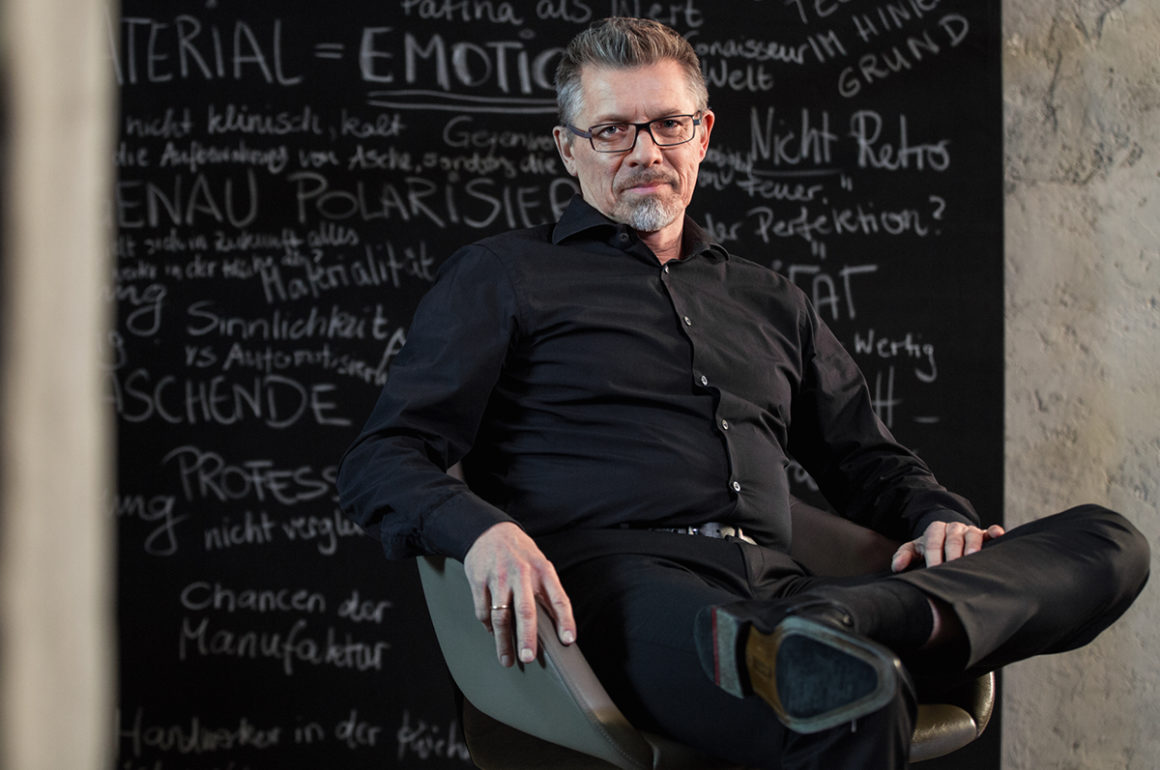
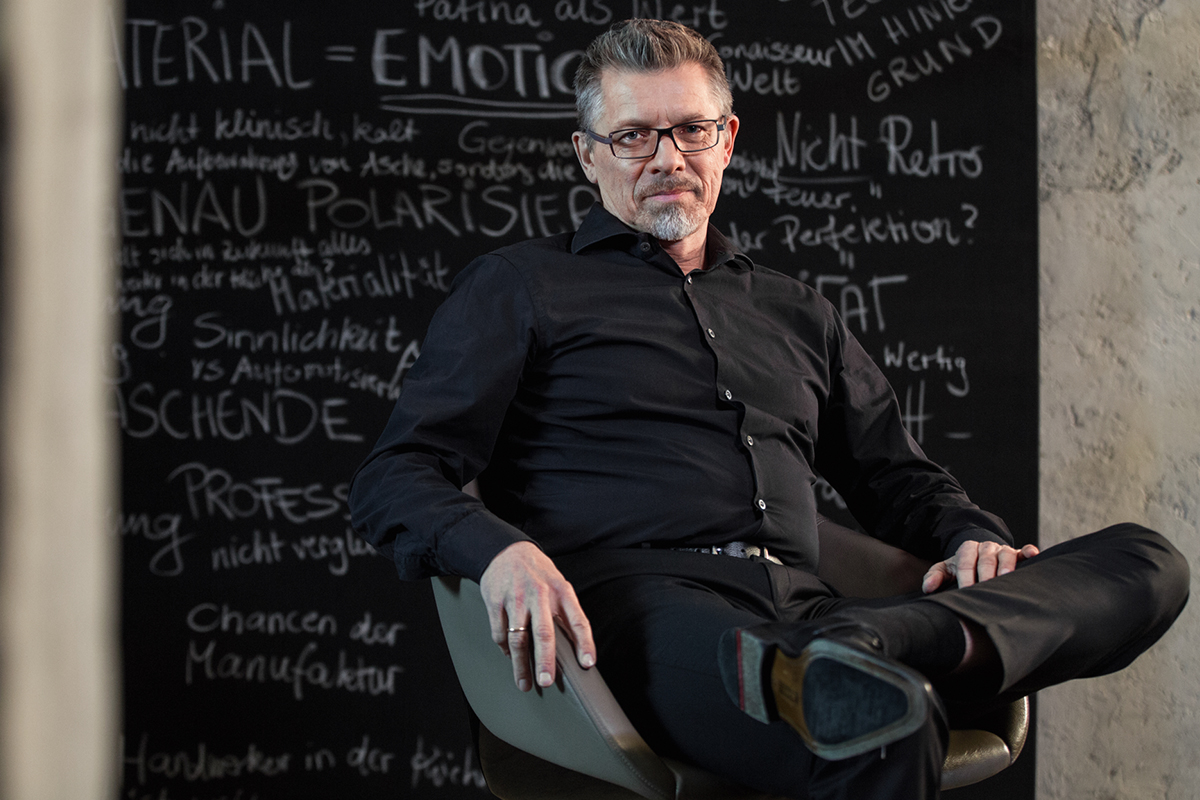

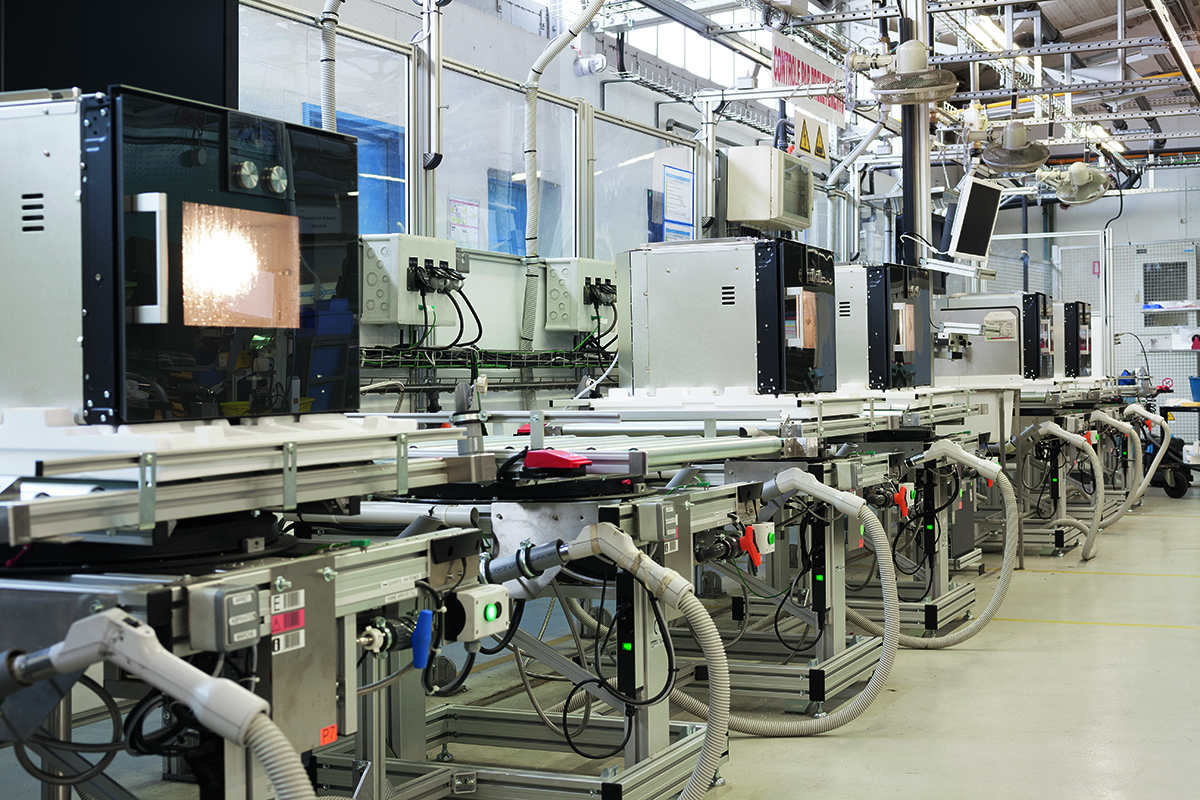
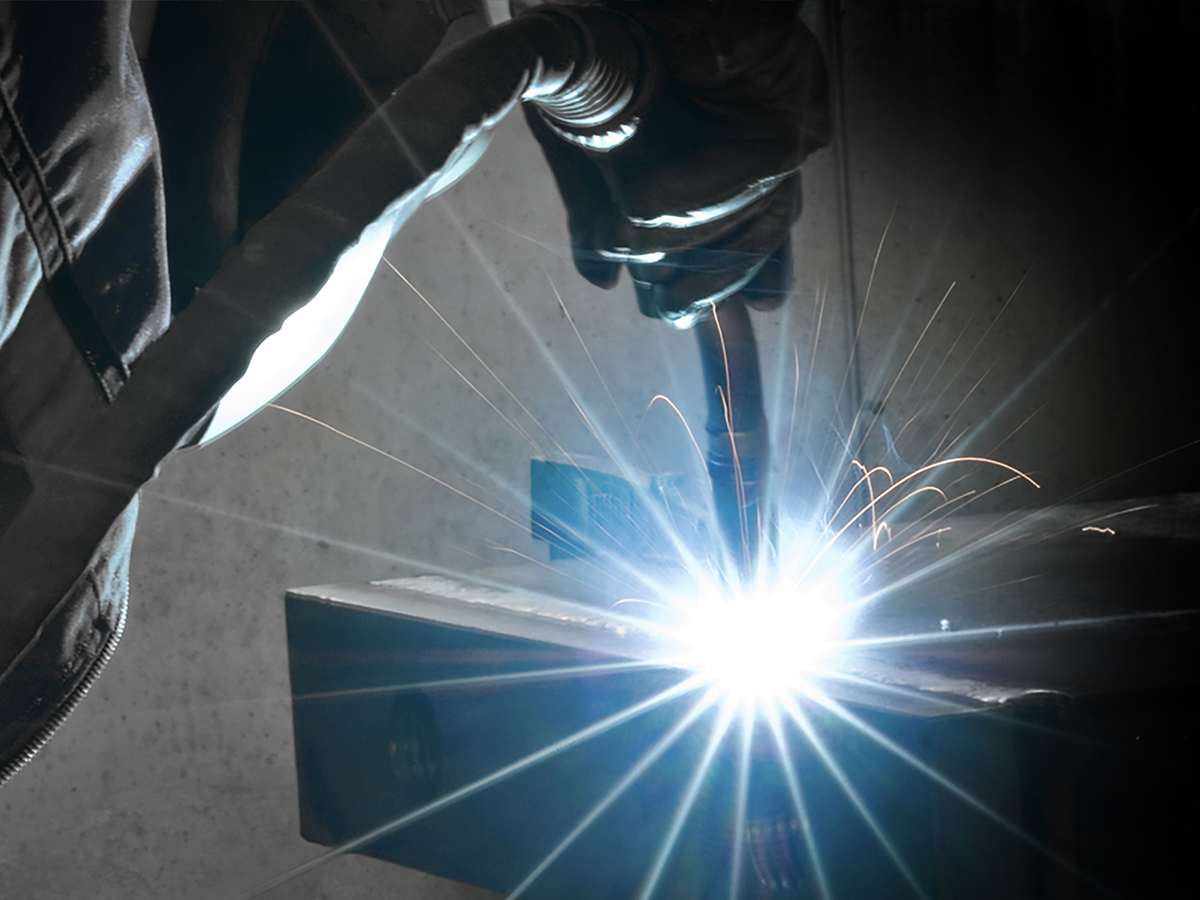





Recent Comments